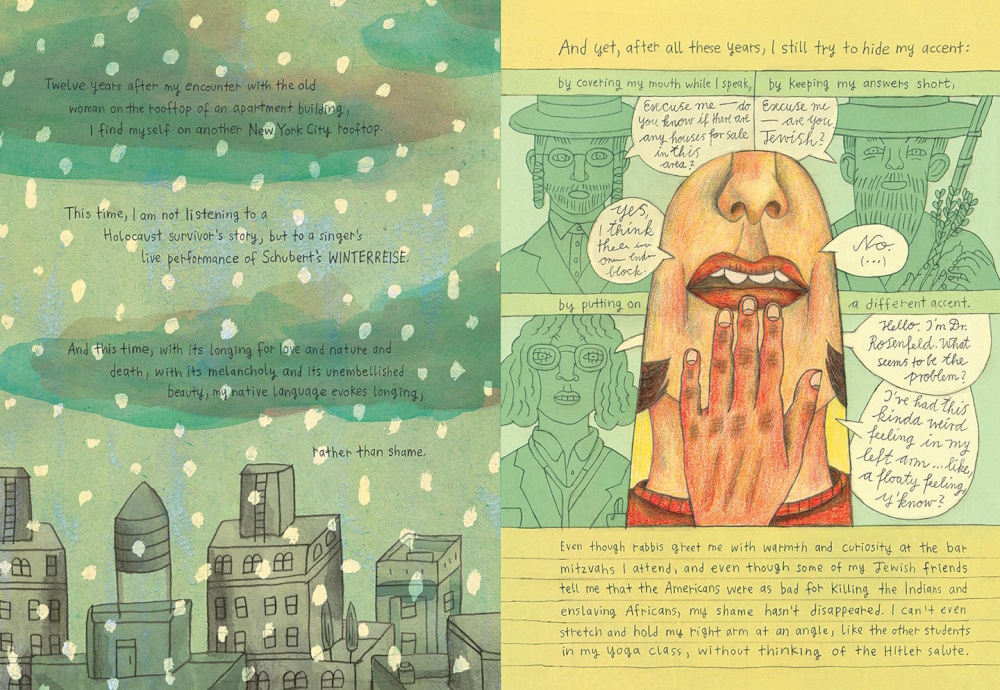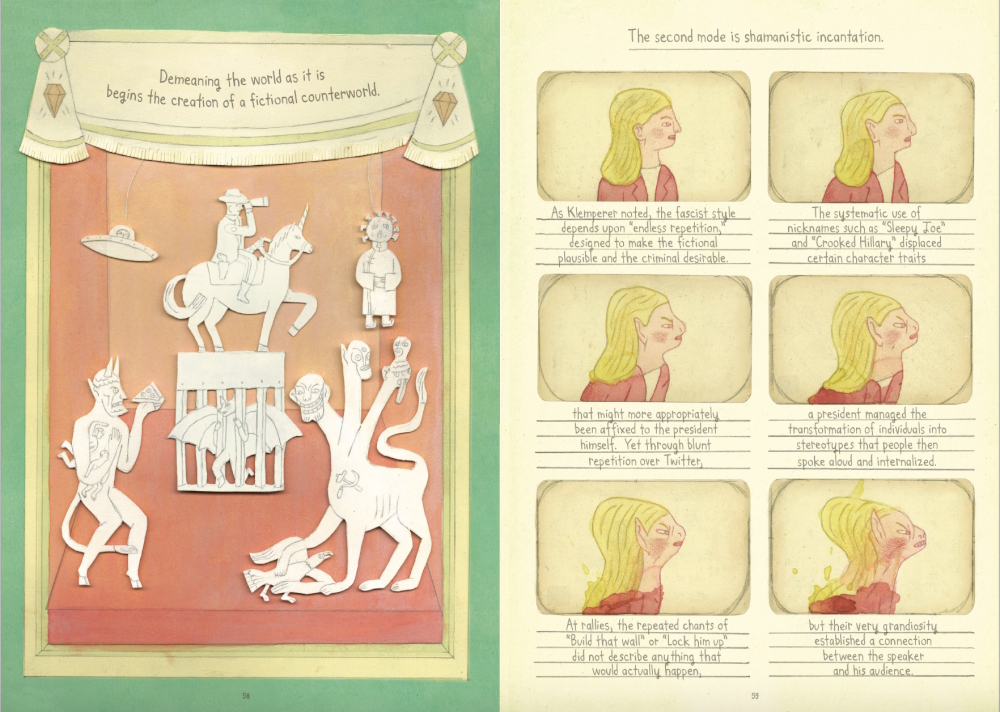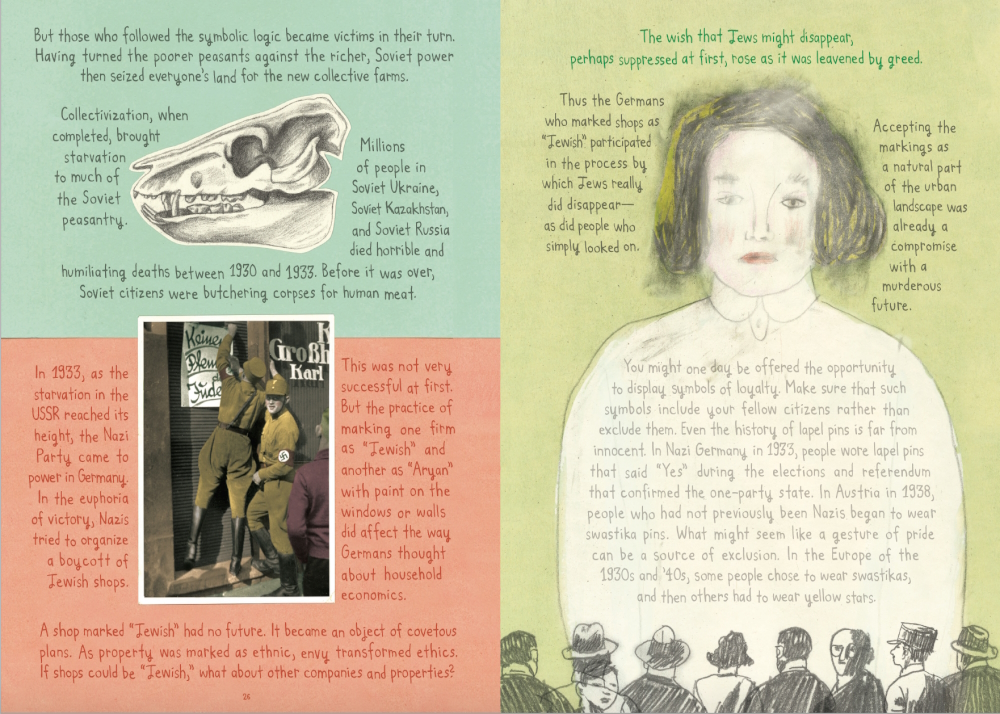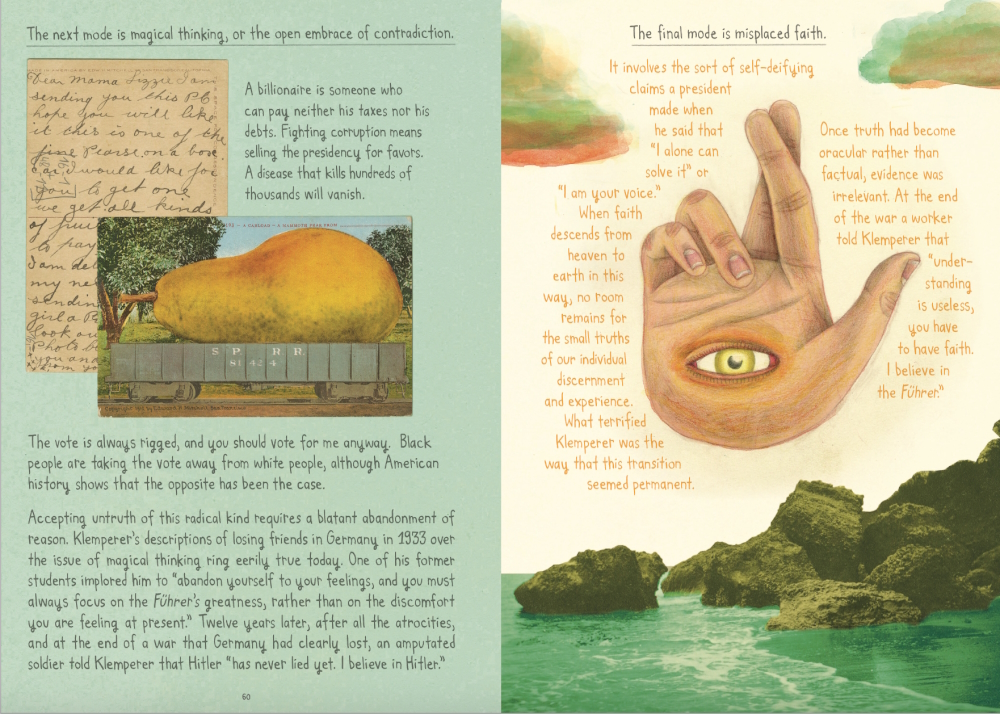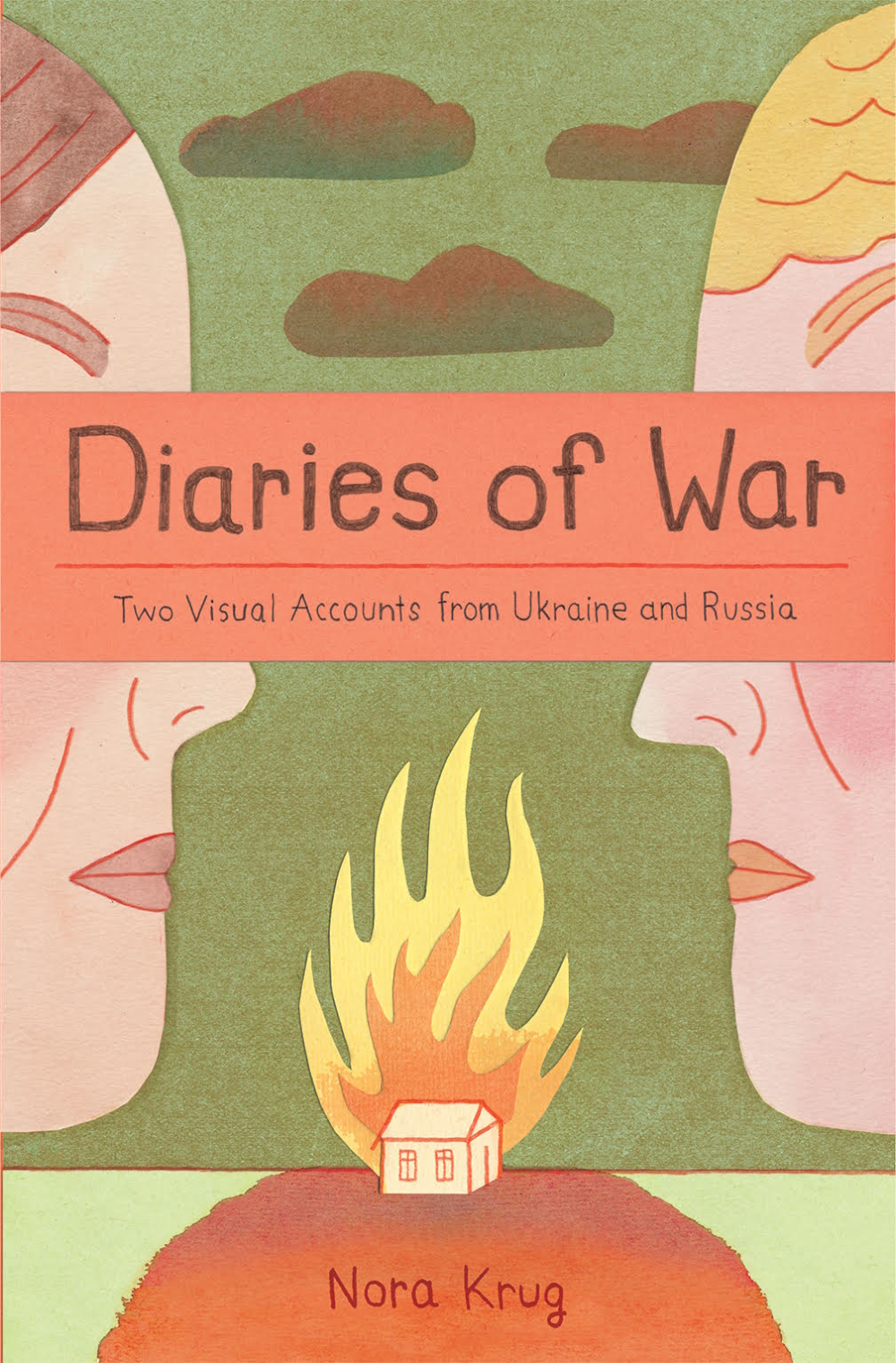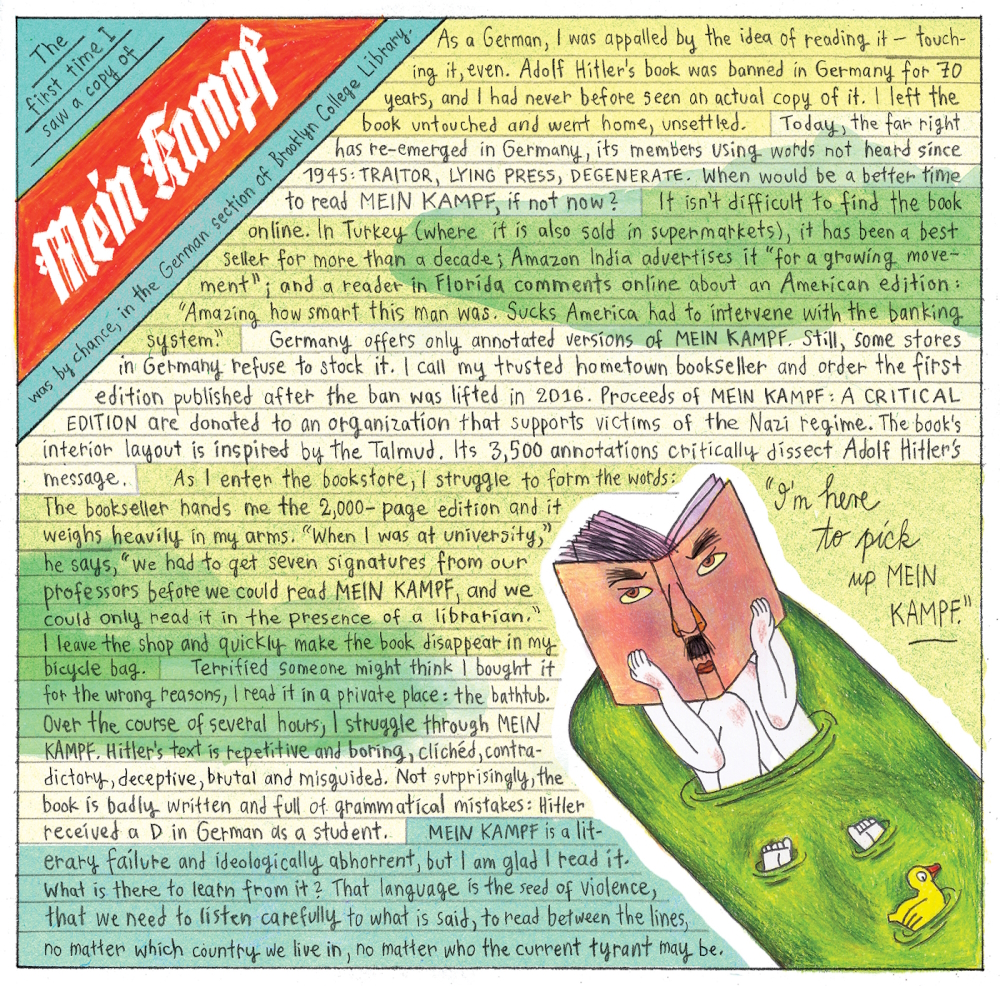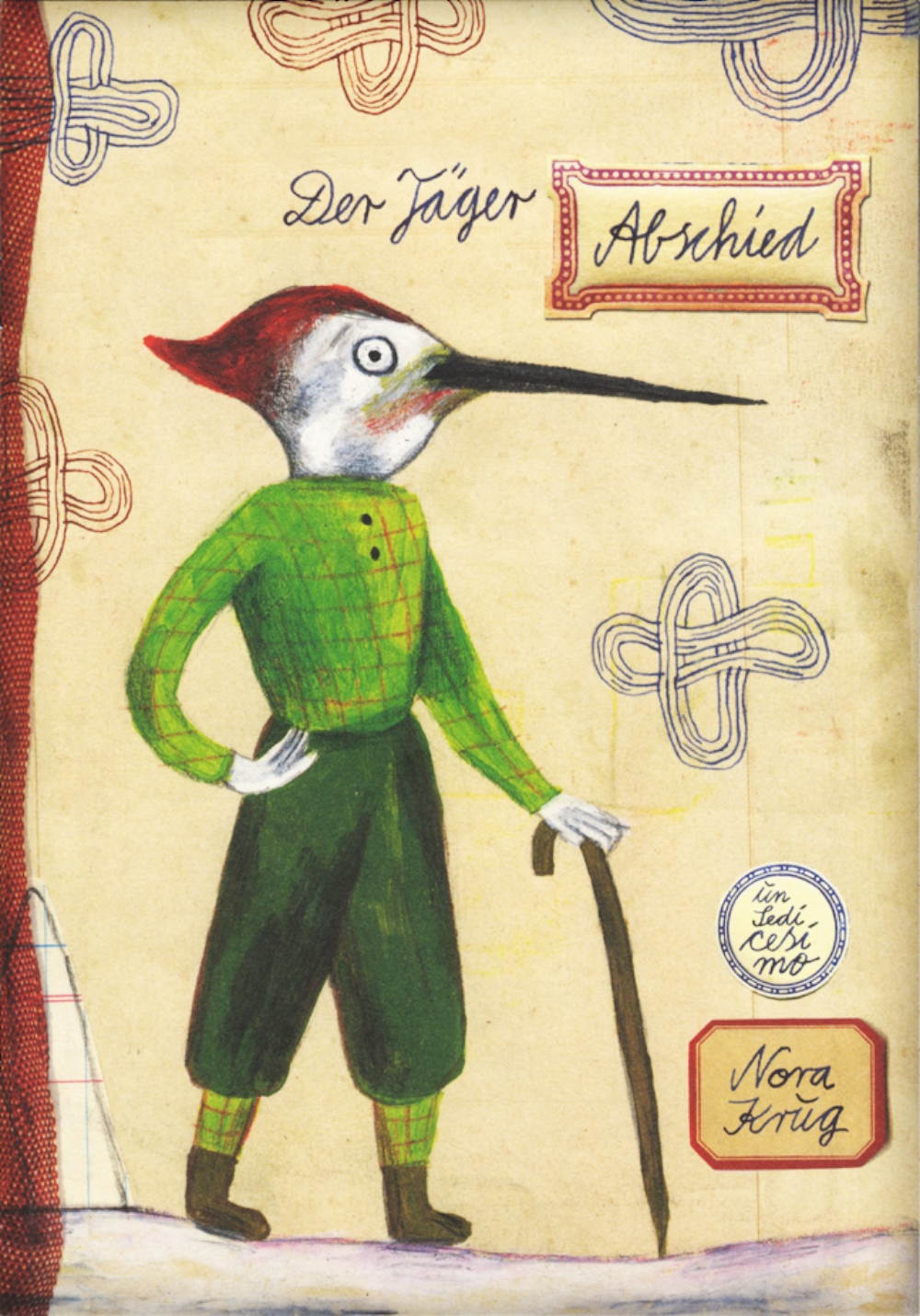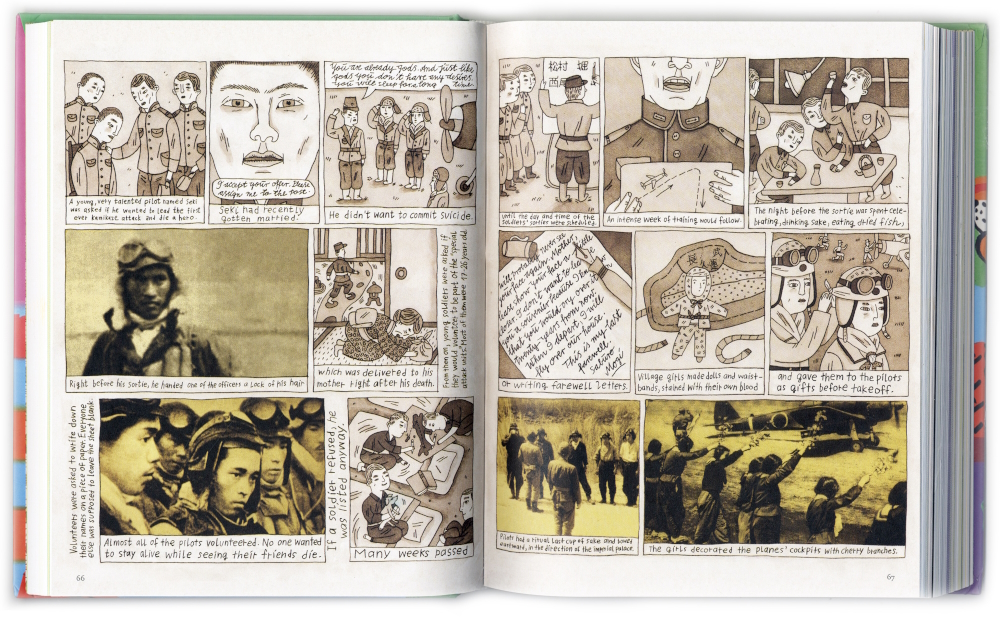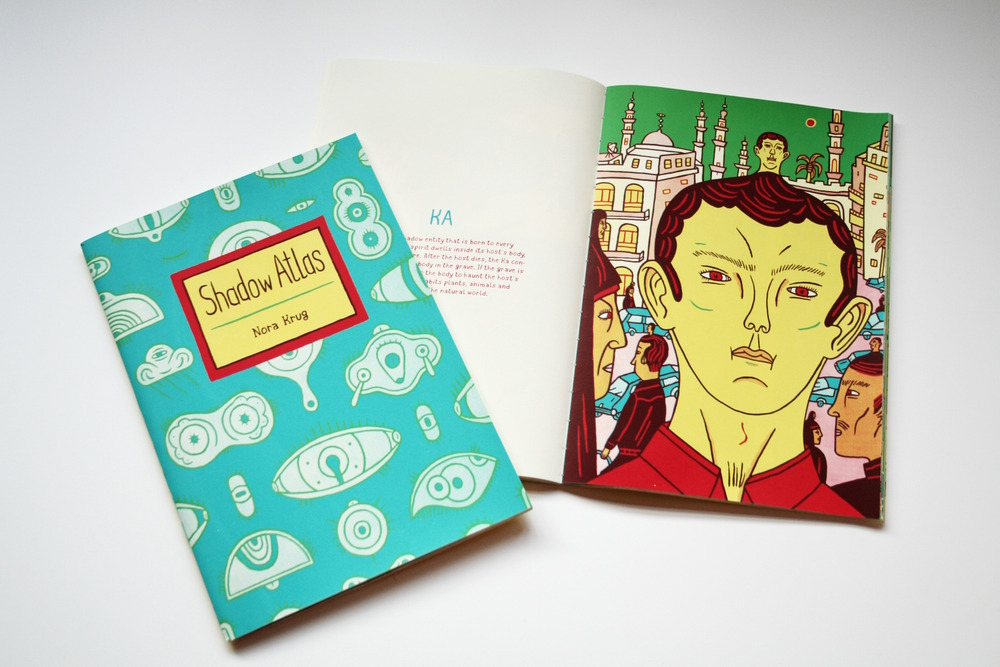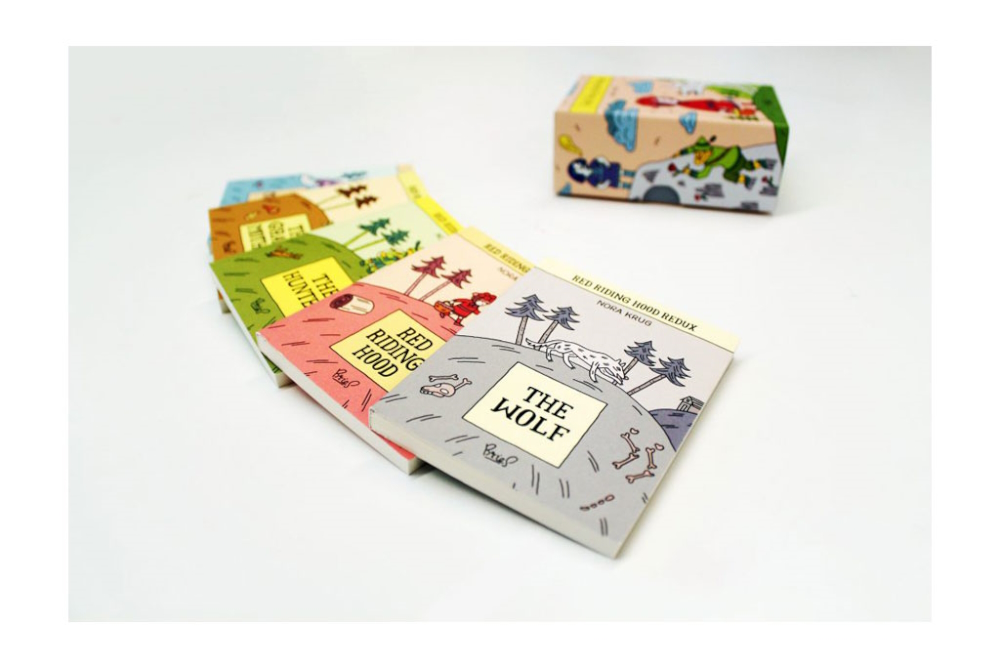Nora Krug
author / illustrator / graphic artist / professor
Germany / US
International bestseller, praised by professional reviewers. On top of numerous annual book critics‘ choice lists in renowned media and honoured with various awards. A success like that is a rarity especially when the publication covers, according to dexigner.com, „a sensitive, complex and painful subject“. How that is presented in a unique work of art was described by cbc.com: „the illustrated and hand-lettered memoir, ‚Belonging: A German Reckons With History and Home‘, is a powerful investigation into the maker’s German family’s involvement in the Second World War and the impact of history on successive generations.“ Noteworthy footnote: the much in demand author of that poignant non-fiction shot to deserved fame fast but didn’t intend to become an illustrator at first!
Nora Krug
author / illustrator / graphic artist / professor
Germany / US
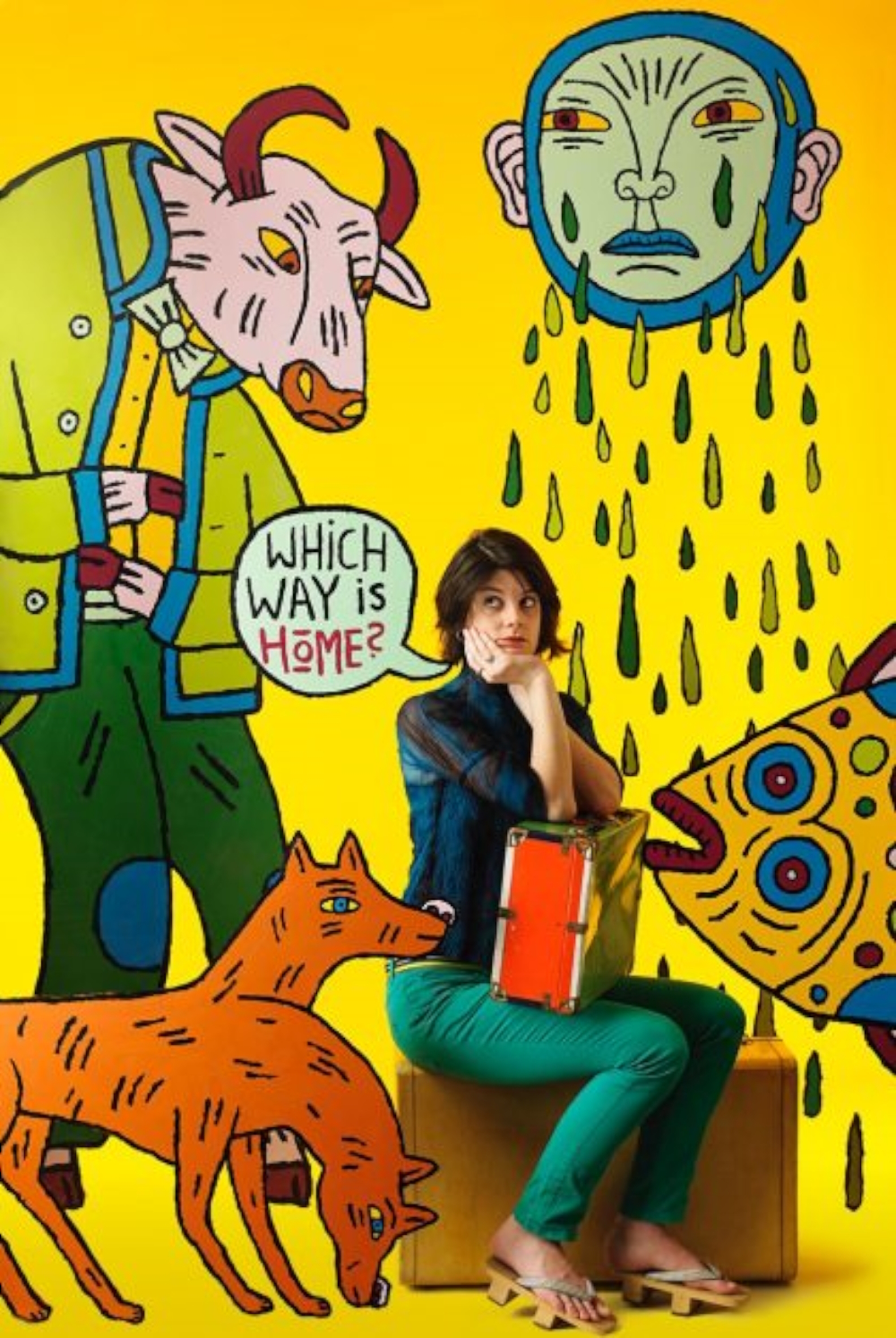
Life moves in mysterious ways. An example for that saying is the career of Nora Krug (* 1977 in Karlsruhe, Germany). The talented youngster attended a specialized middle and high school for classical music in her homeland. At the age of 19 she chose to pursue a career in drawing at Paul McCartney‘s Liverpool Institute for Performing Arts. The teen‘s final project at the highly interdisciplinary school was a documentary about post-war Sarajevo and received a honours degree in Performance Design. Her studies at Berlin’s University of the Arts focused on documentary film and illustrations. She finished with a Diploma in Visual Communication. On to North America and the School of Visual Arts’ Master of Fine Arts (MFA) illustration program, majoring in Illustration as a Visual Essay. Her thesis at this top rated multidisciplinary private college in New York was a reinterpretation of ‚Little Red Riding Hood‘. Nora Kunz selected five main characters of the famous European fairy tale, retelling their individual story by dedicating each a mini-book. The originals of these graphic novels were added to the U.S. Library of Congress. They were professionally published as a box with five booklets (72 pages in total) titled ‚Red Riding Hood Redux‘ five years after the MFA graduation in 2004.
During the study visit in the Big Apple „I was often confronted with negative stereotypes towards German cultural identity, but I was also asked sincere questions about my family’s past I didn’t know how to answer“, she spoke of publicseminar.org. „Over the years, I felt a growing urge to tackle my country’s history in a new way. I realized that to overcome the collective, abstract shame I had grown into as a German two generations after the war I needed to go back and ask questions about my family, my hometown, those questions I was too unreflective as a child and too afraid as a teenager to ask.“ For finding an answer to the fundamental problem „How do you know who you are, if you don’t understand where you come from?“ the young lady returned to South-West Germany and started her project at the base.
She spent two years researching in her hometown’s and her family’s history under the Nazi regime. Then another two years writing and a further two years illustrating. The final product shows how Nora Krug’s varied educational background impacts her artwork. „Combining text with illustrations, photographs and visual materials found online or at archives, flea markets, household liquidation stores and in attics and old cabinets in my family’s home, helped me contrast the documentary with the imagined, the factual with the poetic, and to create a narrative tension that emphasizes the complexity of the German war experience“ (vam.ac.uk).
„One of the most important goals of my book“, she told dw.com, „was to give a universal quality to the story, so that it wouldn't only apply to Germany and the Nazi regime and allow readers to project the situation back then to what's happening now, and maybe find ways of replacing the term "guilt" with "responsibility" and think about what we can do today to contribute to a tolerant society and defend our democracy. I used to think that democracy was basically as a state of being. But I realize now that it's a process that's that we constantly need to defend.“
Regarding her 288-pages memoir she revealed while talking to Rebecca Law of the National Art Library in London: „The act of drawing, the medium or the technique, is not the centre of my work. Instead I see drawing as a tool to explore concepts, ideas and themes, and to communicate ideas about the world. What exact medium or visual aesthetic I use is therefore determined by what kind of story I want to tell, or what kind of emotion the subject calls for. Drawing, to me, means observing, documenting, and reflecting the world around us, in an attempt to understand it better.“
The recipent of various prestigious fellowships names as her artistic influences German Expressionists like Otto Dix and George Grosz, the British-Rhodesian author Alexandra Fuller and essayistic documentary films by directors like Werner Herzog, Joshua Oppenheimer as well as Hubert Sauper. These inspirations are visible in a body of work like the childrens‘ book ‚My Cold Went On Vacation‘ (coop with Molly Rausch in 2010). 2012 brought ‚Shadow Atlas‘, an encyclopedia of ghosts and spirits. The 53 pages were awarded a Gold Medal by the Society of Illustrators and a Silver Cube by the Art Directors Club. In the same year ‚Kamikaze‘, the true story of Japanese WWII Kamikaze pilot Ena Takehiko, who survived his suicide mission twice, was turned into a 10-pages visual biography and part of the 352-pages anthology ‚The Best American Comics of 2012‘. ‚The Hunter’s Farewell‘ was published in 2013: „Joseph von Eichendorff’s poem about a group of volunteer soldiers leaving German forests to fight against Napoleon’s army, illustrated with drawings and objects found at flea markets – an uncomfortable confrontation with German nostalgia in sixteen pages“ (artist’s website).
Her most popular book ‚Belonging‘ (2018) was released in 17 countries including Brazil, China, Korea and Russia. ‚On Tyranny: Twenty Lessons from the Twentieth Century‘ (2021) is a graphic edition of historian Timothy Snyder’s bestselling book of lessons for surviving and resisting America’s arc toward authoritarianism. It was chosen, among others, as The New York Times Best Graphic Novel of 2021 and The New York Times Editor’s Choice. The publication of ‚Diaries of War: Two Visual Accounts From Ukraine And Russia‘ is a collection of Krug's series that ran in the newspapers Los Angeles Times (US), El Pais (Spain), L’Expresso (Italy), Sueddeutsche Zeitung (Germany) and De Volkskrant (Holland). It will be published in the US, the UK and Spain in 2023, and in Germany and other territories in 2024.
The following quote on newschool.edu sums up her overall approch perfectly: „I am interested in exploring how political and social issues can be communicated on an emotional and personal level through visual narratives.“
In an interview on the website of London‘s Victoria And Albert Museum this artist has some recommendations ready that are suitable for all creatives: „There is no secret recipe for success. Do the kind of work you are passionate about, not the kind of work you think is going to be most successful. Focus on subjects that you care deeply about, and try to put your personal perspective into every piece you create, no matter if it’s a personal or a commercial piece. Challenge and expand existing ideas we have about what the field should look like. Believe in yourself, but always question what you do.“
Nora Krug, whose work has been exhibited internationally, teaches illustration as an associate professor at the Parsons School of Design in New York. The German lives with her Jewish husband and their daughter in Brooklyn, NY (US).
Interview September 2023
Drawing as a tool: observing, documenting and reflecting the world
INTUITION/IMAGINATION
?: How does intuition present itself to you – in form of a suspicious impression, a spontaneous visualisation or whatever - maybe in dreams?
Not in dreams, unfortunately: When I wake up, my nocturnal ideas always appear flat. Inspiration usually appears during unexpected moments, when I don’t sit at my drawing desk and work, but during walks in the park, while riding the subway to work, or in the shower. I would describe my work process both as intuitive and targeted. It’s not always easy to find the right balance.
?: Will any ideas be written down immediately and archived?
I often take notes in a little booklet that I carry around with me, or on my phone. Or I send myself (or accidentally someone else) an email as a reminder to add that thought to a longer list of ideas that I keep on my desktop.
?: How do you come up with good or extraordinary ideas?
Who’s to tell if an idea is ever extraordinary? Ideas come into my mind all the time, but they aren’t always worth pursuing. When I get an idea, I think about it for a while, about whether it has the potential to communicate to others, whether it can shed light on complex issues, whether it could engage in a larger dialogue on a subject that I care about. If the answer is yes, then I decide to pursue it. But whether anyone else out there will think of it as a good idea I will only find out when a project is completed.
?: Do you feel that new creative ideas come as a whole or do you get like a little seed of inspiration that evolves into something else and has to be realized by endless trials and errors in form of constant developments until the final result?
Definitely the latter. Every illustration, every book is a work in progress, and often involves a lot of doubt, agony, and trial and error. I think of my books as mosaics that only take shape in tiny increments, until I am convinced it’s time to let go and publish them. Having a grand idea doesn’t mean having figured out how to make it work physically and in the real world.
?: What if there is a deadline, but no intuition? Does the first fuel the latter maybe?
A deadline challenges you to think harder of ideas. You have no choice but to create something. Most artists don’t have the luxury of sitting around, waiting for inspiration. Art is work, it’s a job that you get paid for. And a job always comes with obligations and responsibilities. Some illustrations end up being more successful than others, sometimes you can achieve more, sometimes less, in the amount of time you’re given. But all work is valid work. Letting go when the deadline has arrived, even when you are not 100% happy with the outcome, is part of the reality of being a working artist.
INSPIRATION
?: What inspires you and how do you stimulate this special form of imaginativeness?
I’m inspired by the world: by animals and nature, by people and their stories, by countries and their histories. I spend a good amount of time each day listening to or reading the news, and what interests me most is politics and how we as people are affected by it. I’m also inspired by artistic mediums such as illustrated and non-illustrated fiction and non-fiction books and films.
?: How do you filter between ideas that are worthwhile pursuing and bad ones that you just let go of?
Bad ideas are those that provide simplified answers in order to satisfy an audience. Good ideas are the ones that challenge you to question your relationship to the world. Sometimes it isn’t easy to figure out which idea falls under which of these categories. You have to try to look at your ideas from different angles, sometimes you have to make initial sketches or write initial drafts, to find out whether an idea is sustainable or not.
?: Does an idea need to appeal to you primarily or is its commercial potential an essential factor?
My projects are always primarily driven by my own personal interests, by some aspect of the world that I care about, that I worry about or that makes me angry, and that I want to learn more about. Then I think about how that idea could fit into the larger commercial context of my work and career. I usually prioritize those ideas that are both deeply meaningful to me, but that I also assume will be of interest to my readership.
?: Do you revisit old ideas or check what colleagues or competitors are up to at times?
While I am of course inspired by my colleagues‘ work, other peoples‘ projects never determine what I will to work on next. In order for me to dedicate a certain number of years on a new book, it needs to be about something that I personally care about, an idea that grows out of some deep inner place. I have a list of ideas for projects I’m interested in pursuing, and I revisit it regularly. Alas – there’s only so much time!
CREATIVITY
?: What time or environment best suits your creative work process — for example, a time and place of tranquility or of pressure? Which path do you take from theory or idea to creation?
When I write, I work better in environments that are noisy, such as cafés, than at home, where it is quiet and where I feel a constant urge to walk over to the fridge to see what’s inside. When I draw, I like to sit at my drawing desk and listen to audio plays on BBC Sounds. When it’s too quiet, I get distracted.
?: What’s better in the realization process — for example, speed and forcing creativity by grasping the magic of the moment or a slow, ripening process for implementation and elaboration?
It depends on the drawing, the concept and the project, but I would say I’m someone who deliberates a lot while working, corrects and edits a lot, so the process is quite slow.
?: How important are self-doubt and criticism by others during such a process?
I always doubt myself when I work. It might not always be productive, but I think it makes my work better and deeper in the end. There are many people whose critique I rely on when I work on a new project: friends, family, agents, and editors. But I don’t invite criticism in the early stages of a project, because I feel like I need to know what I am doing myself before eliciting someone else’s opinion.
?: Is it better to be creative on your own, to trust only your own instincts, or to work in a team?
I could imagine working in a team but only if my role is different from those of the other members of the team. I cannot imagine writing a book with someone else, or making a drawing with someone else, but I can imagine illustrating someone else’s book, or film.
?: In case of a creative block or, worse, a real failure, how do you get out of such a hole?
There have been low moments like that in my career, but the only thing you can do in these moments is to continue and try harder until eventually you get over that bump – and hopefully remember next time that you will eventually get there.
?: Should a creative person always stay true to him- or herself, including taking risks and going against the flow, or must the person, for reasons of commercial survival, make concessions to the demands of the market, the wishes of clients and the audience’s expectations?
Every artist should stay true to their ethical beliefs. Beyond that, it is, of course, up to every individual artist to pursue their career in any way that works for them. It’s no one’s place to judge. Art is a profession, and artists need to sustain themselves just like anybody else. We wouldn’t expect a dentist to only treat patients with the most interesting set of teeth.
?: How are innovation and improvement possible if you’ve established a distinctive style? Is it good to be ahead of your time, even if you hazard not being understood?
Art should never be about style. It should be about communicating ideas, thoughts, and emotions, which, in turn, call for various kinds of visual representation. I admire artists who can reinvent and sustain themselves over the course of their careers, but I do think that that is a rare gift.
?: When does the time come to end the creative process, to be content and set the final result free? Or is it always a work-in-progress, with an endless possibility of improvement?
I see every piece as a work in progress. Every book is a new piece in a larger dialogue in my head about subjects that I care about. Once I feel that I’ve given my best, that I found the right language and images to convey the ideas that I want to convey, then I feel comfortable letting go. But nothing ever feels 100% finished, because my relationship to the piece will change over time.
?: Do you have a clue why do you do what you do the way you do it?
Whenever I start working on a new book, I don’t know what I’m doing – until I do, and it’s hard to understand how I eventually get to that latter stage.
SUCCESS
?: “Success is the ability to go from one failure to another with no loss of enthusiasm.“ Do you agree with Winston Churchill’s quote?
It’s a great quote. But success doesn’t necessarily include failure. I do think that a certain amount of deep introspection, however, is a necessary ingredient for what I would consider success.
?: Should or can you resist the temptation to recycle a ‘formula’ you're successful with?
I would get bored if I always created the same kind of book or used the same form of visual expression in my work. The whole idea of creating art, to me, is about learning something about the world and about yourself that you didn’t know before.
?: Is it desirable to create an ultimate or timeless work? Doesn’t “top of the ladder” bring up the question, “What’s next?” — that is, isn’t such a personal peak “the end”?
Worrying about creating a timeless masterpiece is the worst thing you can do as an artist. All I try to focus on is what I want to say and what the best way is to express it. It is then up to the readers to interpret the work in any way they want. Rather than thinking in these big categories, I think about my books and illustrations as a body of work that focus on themes that I care about. I don’t necessarily think of one particular project as being more “important” than another.
MY FAVORITE WORK:
My three most recent books most represent who I think I am as an artist:
Belonging: A German Reckons with History and Home (authored and illustrated by me)
On Tyranny: Twenty Lessons from the Twentieth Century (illustrated by me)
Diaries of War: Two Visual Accounts from Ukraine and Russia (written, edited and illustrated by me)
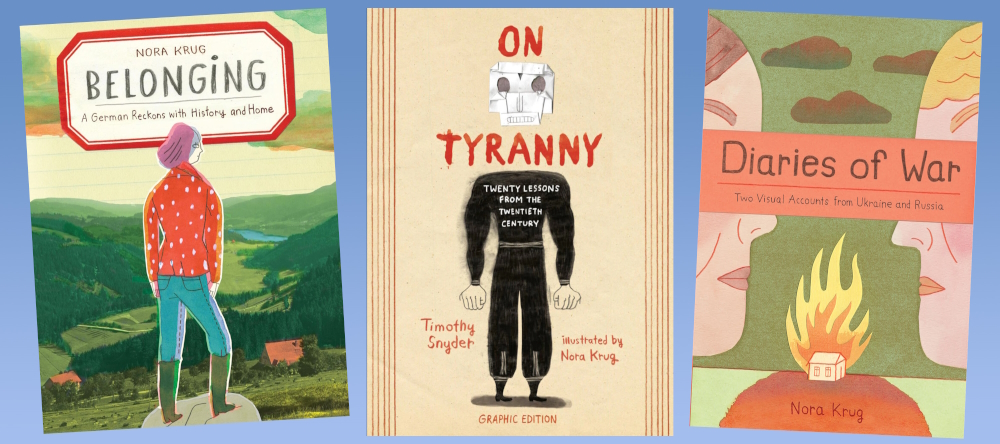
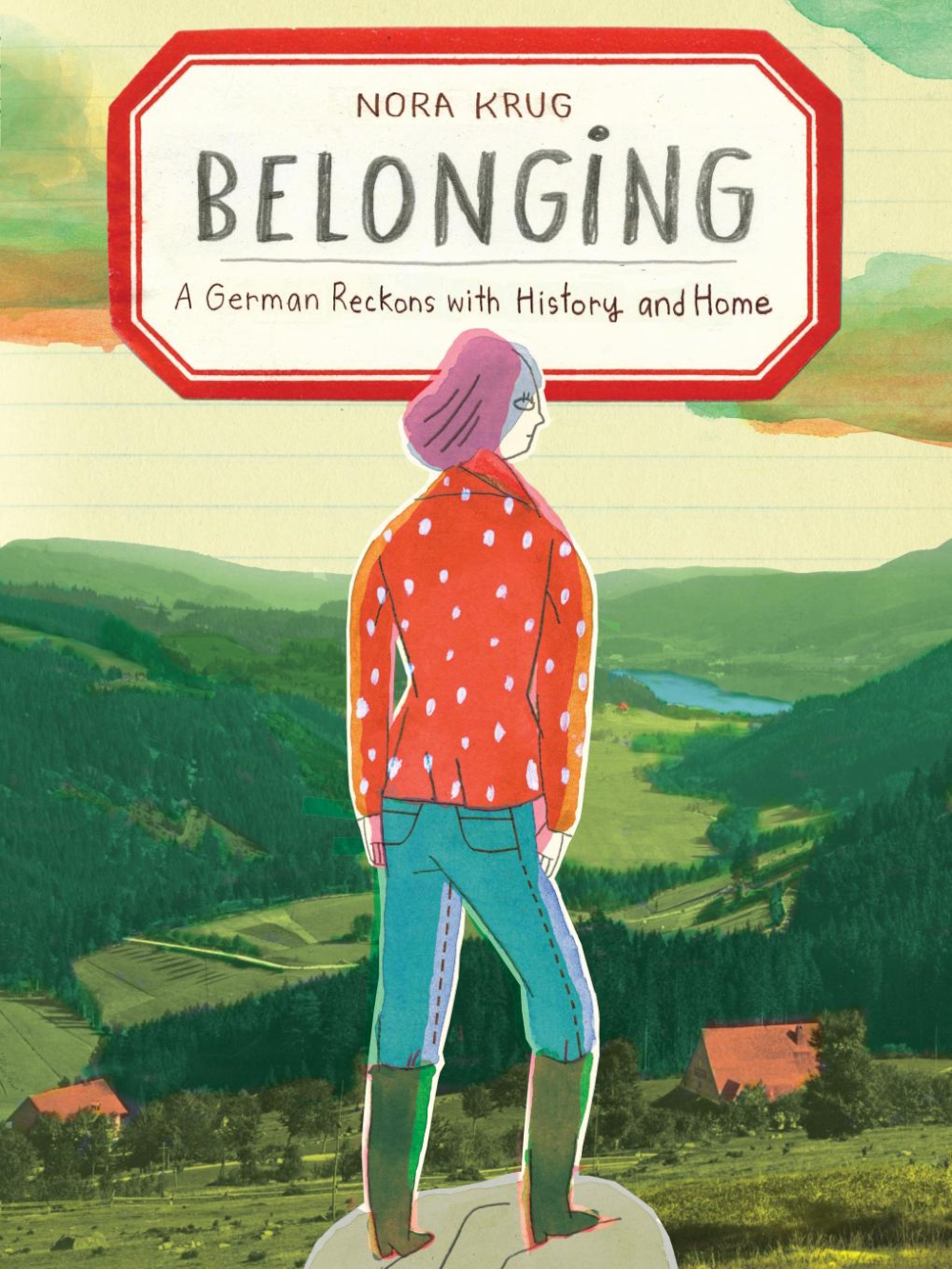
!['Belonging': „I knew from the beginning that I wanted to move away from the “traditional” graphic novel format and approach the subject from a collage / scrapbook angle. [...] Also I wanted to convey the idea of fragmentation. [...] History is an accumulation of fragmentary, experienced moments in time to which we assign a narrative in retrospect, in order to make sense of the events that occurred and the ways in which they impact our lives“ (vam.ac.uk).](https://divine-spark.net/media/pages/creatives/nora-krug/34eaa2cb74-1691143875/belonging-1.jpg)


